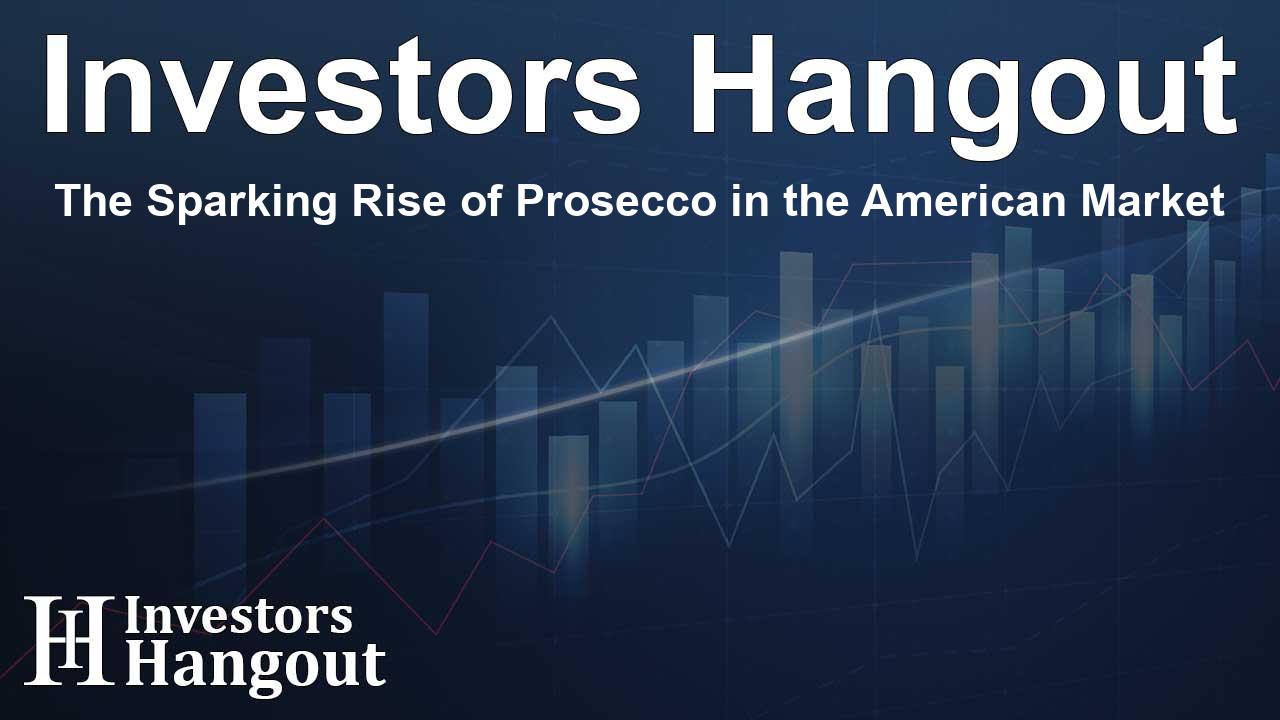The Sparking Rise of Prosecco in the American Market

The Sparkling Rise of Prosecco in the American Market
Prosecco has found its way into the hearts of many American consumers, establishing a robust presence in the wine market. This Italian sparkling wine is becoming increasingly popular, accounting for 31% of the total value of Italian wines sold in the United States. Strikingly, 27% of millennials have embraced Prosecco, making it a favorite across various age groups. Beyond simply being consumed on its own, Prosecco has integrated itself into mixology, playing a vital role in cocktails and refreshing beverages.
A Journey from Near Obscurity to $500 Million
In just 15 years, Prosecco has transformed from a little-known wine to a heavyweight brand, achieving over $500 million in U.S. sales. The recent sale categories, including Conegliano Valdobbiadene Prosecco Superiore DOCG and Asolo DOCG, have seen sales increase dramatically. Reports indicate that the last seven years alone have seen a staggering 178% increase in sales, outperforming the overall growth of Italian wines.
Challenges and Resilience
Adolfo Rebughini, General Director of Veronafiere, noted the various challenges that have arisen during this period, from the COVID-19 pandemic to changing consumer preferences. Nevertheless, Prosecco has shown remarkable adaptability, propelled by effective marketing strategies and a consistent promotional effort. Its participation in events, such as Vinitaly.USA, showcases the product's growth and reinforces its position within the competitive wine market.
Record Performance in the Market
Data from Vinitaly and the Unione Italiana Vini (UIV) reveals that Prosecco's market share in the U.S. stands strong at 27% compared to the overall Italian wine market, reaching a significant milestone with $531 million in sales this year. The trend showcases nearly continuous growth, interrupted only briefly amid the pandemic. Looking forward, Prosecco is set to further expand its influence, particularly given its appeal among younger consumers.
An Icon of Accessibility
Prosecco has become emblematic of accessible enjoyment, boasting $2.9 billion in annual consumption and a price point that remains affordable. Carlo Flamini, head of the UIV-Vinitaly Observatory, points out that Prosecco is quickly closing the gap with more prestigious sparkling wines like Champagne in terms of brand awareness. Its purchase conversion rate stands at an impressive 31%, showing that many consumers choose Prosecco as their go-to sparkling wine.
Regional Opportunities and Trends
Distribution data also highlights Prosecco as a leader in the U.S. market, capturing a 30% share of the sparkling wine category and outperforming Champagne. Opportunities for growth remain substantial in the Western states and East North Central region, while consumption remains high along the Eastern Seaboard, making it a key area for sales and marketing efforts.
Future Directions: Expanding the Consumer Base
The challenge now lies in diversifying the consumer demographic. While traditional wine drinkers continue to purchase Prosecco, initiatives to attract a multicultural customer base are in play. This is crucial as the U.S. market evolves and attracts a wider consumer variety.
Vinitaly.USA: A Stage for Italian Wines
In upcoming events like Vinitaly.USA, numerous Italian wineries will showcase their offerings, demonstrating the growth potential of Italian wines in the American market. As 250 Italian wineries and consortia come together, they anticipate remarkable attendance from importers and distributors, underscoring the event's importance and ongoing appeal.
Celebrating Prosecco's Resilient Story
Prosecco's journey outlines how quality, strategic promotion, and adaptability can establish Italian wines as frontrunners in global markets. The ongoing success of Prosecco is an inspiring tale of resilience and opportunity, showcasing the potential of Italian wines in a competitive environment.
Frequently Asked Questions
What factors contributed to Prosecco's success in the U.S.?
Prosecco's success stems from its integration into American culture, effective marketing, and its appeal to a broad demographic, especially millennials.
How has Prosecco performed in comparison to other Italian wines?
Prosecco has outperformed other Italian wines, with a higher market share and sales volume, marking it as a leader in the sparkling category.
What are the growth opportunities for Prosecco in the U.S.?
Growth opportunities include expanding into Western states and diversifying the consumer base to reach a broader demographic.
How does Prosecco's price point affect its popularity?
The average bottle price just under $18 makes Prosecco an accessible choice for many consumers, driving its popularity in the market.
What impact does Vinitaly.USA have on Prosecco's market presence?
Vinitaly.USA provides a platform for Italian wines like Prosecco to connect with importers and distributors, enhancing visibility and promoting growth.
About The Author
Contact Lucas Young privately here. Or send an email with ATTN: Lucas Young as the subject to contact@investorshangout.com.
About Investors Hangout
Investors Hangout is a leading online stock forum for financial discussion and learning, offering a wide range of free tools and resources. It draws in traders of all levels, who exchange market knowledge, investigate trading tactics, and keep an eye on industry developments in real time. Featuring financial articles, stock message boards, quotes, charts, company profiles, and live news updates. Through cooperative learning and a wealth of informational resources, it helps users from novices creating their first portfolios to experts honing their techniques. Join Investors Hangout today: https://investorshangout.com/
The content of this article is based on factual, publicly available information and does not represent legal, financial, or investment advice. Investors Hangout does not offer financial advice, and the author is not a licensed financial advisor. Consult a qualified advisor before making any financial or investment decisions based on this article. This article should not be considered advice to purchase, sell, or hold any securities or other investments. If any of the material provided here is inaccurate, please contact us for corrections.
